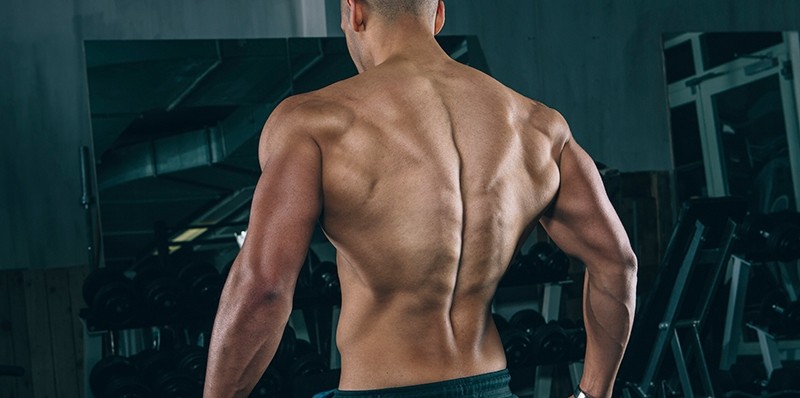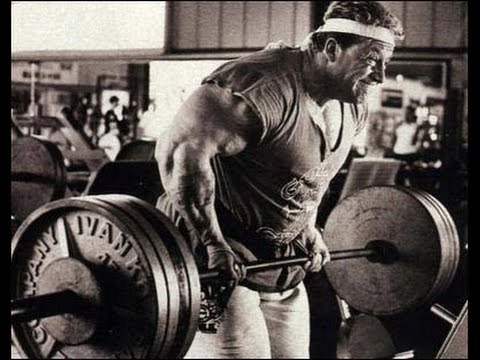The Pendlay row is a true full-body exercise.” – Brett Hoebel (NBC’s The Biggest Loser)
Your body is a complex machine. This means that both complex and simple motions are what should be your chosen weapons when building muscle, strength, and fitness. And while today’s man often prefers to rely on technology and complexity to achieve more… when it comes to building muscle, it is sometimes the simplest motions that can do the most for you. Especially when you are talking size, power, and strength.
Take, for instance – the humble (yet incredibly effective) Pendlay Row.
Pendlay Versus Conventional
What’s so different about the Pendlay row form versus the conventional row? Well, we asked Brett Hoebel, the celebrity trainer on NBC’s The Biggest Loser-11 and the creator of the 20 Minute Body.
“The Pendlay Row, created by Glenn Pendlay, is actually a very strict version of the conventional bent-over row using a barbell and performed with a more explosive concentric lifting motion and slower eccentric lowering motion,” explains Hoebel. “A conventional row is usually performed with one arm using a dumbbell, where the body is supported with either a leg and/or hand on a bench.”
We like to think that Glenn designed this move to work the upper back with such focus and concentration, that it ‘tricks’ the body into using better form. Let’s think about that for a moment: One of the biggest problems with the conventional row is that it is just too darn easy to cheat (i.e. what is often referred to as air-humping, or the Yates Row). The Pendlay Row has one distinct advantage over the conventional row: It does not allow the use of momentum to make the movement easier.
What’s is the Key Difference?
It is easy to get the conventional air humping row confused with the Pendlay. But it is also easy to distinguish between the two once you know what to look for. Air humping your rows is when you hang the weight in front of you at a 120-degree bend at the waist and proceeds to use momentum to jerk the barbell up and down. When you do this, you are only using a portion of your muscles to do, let’s say 30 to 40 percent of the movement—and quite frankly you’re not getting as much out of the motion as you could be.
Why? Because most muscles respond best when they are being stressed through their entire range of motion, that is exactly what the Pendlay Row was designed to do. To stress the entire length and girth of the muscle through the entire range of motion.
The Pendlay (Full Body) Edge
But beyond just the strict form, there is one other thing that the Pendlay Row does better than a conventional row—it works more muscles. “Because the Pendlay Row is performed unsupported and you are bent-over closer toward the floor, you activate more secondary and stabilizing muscles,” describes Hoebel. “Where the conventional row focuses primarily on your lats, the Pendlay row is a true full-body exercise that focuses not only on your Lats but also strengthens your Low back, Rhomboids, Shoulders, Traps, Forearms, Biceps, Hamstrings, Glutes, Adductors, and Spinal Erectors.”
It is difficult enough to say all eleven of those body parts in one breath, much less try to find a back exercise that can work all those in the same rep. The other unique aspect of the Pendlay Row is that it actually allows for a more explosive movement, even though you are not allowed to cheat with extra momentum. This is because it is treated much like an Olympic lift. In other words, it contains a strict explosive movement.
And yeah, we said it… explosive. And you can explode through a rep while keeping strict form, and this is the key to boosting ‘explosive’ strength (and size). The Pendlay Row allows for a strict explosive movement by preparing you for each rep. It does this by allowing you to rest a brief second in between each rep.
Resting in between reps is what we will refer to as ‘de-loading’ the weight. This is accomplished by placing the bar on the ground momentarily for a quick rest before continuing with your next rep. The conventional row is typically completed with the weight in the air the entire time, which leaves your muscles too tired to accomplish a fully explosive movement for each rep. You just end up jerking the weight to make up for your lack of energy.
HOW TO: The Pendlay Row
We’ve talked a lot about what makes the Pendlay Row unique, but let’s get into the specifics of how to accomplish this movement with the correct form and concentration that it deserves.
Begin this exercise with your torso parallel to the floor (never arch your back). The Pendlay Row is classified as a power movement—but don’t let that phrase trick you into thinking it is okay to use momentum to help you lift more weight. The entire motion is accomplished with a 90-degree bend at the waist. You should never fudge your form by swinging the weight up and down using your legs and lower back (Yates Row style). This exercise both begins at ends at a 90-degree angle – there is never any allowance for cheating.
This can be one of the safest ‘power moves’ you can do for your upper back, so long as you are always in control of the weight. Next, grab the bar at shoulders width, and in a controlled (but explosive) motion – pull the bar up to your lower chest/upper stomach.
Pull your shoulder blades together as you pull up. Imagine yourself trying to pull the barbell through your torso, as that is approximately the type of explosive motion this exercise calls for. As you return the barbell back to the ground – do so in a slow and controlled manner. Let the plates drop all the way to the ground, relax your grip for a brief moment, take in a deep breath, reassess that your stance is correct, and do it all over again.
You should use as heavy of a weight as you can use while engaging in perfect form. With that being said, it is always best to use larger plates (45-pounds), as the smaller weights may leave your back compromised when you bend to set the barbell down. If you are not quite ready for the 45’s, you can also set the plates on a platform on each side, so that when you extend your arms, your torso remains parallel to the floor.
The Payback
If done properly, this exercise will build strength and size to your upper and lower back, in particular, the lats (Latissimus Dorsi), giving you that nice v-shape. The secondary muscles that are also worked in conjunction with this exercise include the lower back, hamstrings, core, and that long list of secondary muscles that Brett Hoebel explained earlier.
Keep in mind that while this exercise may be considered one of the ‘kings’ of back builders, it is certainly not the only game in town. In other words, always mix your back workouts with plenty of other movements, including conventional rows, dumbell rows, inverted rows, underhand rows, t-bar rows, cable rows, and more. These movements will hit your lats at slightly different angles, which will also help promote size, quality, and strength.
The Yates Row is actually a pretty good example of how to work the lower lats effectively, so we’re not counting it out completely – just not recommending it as a ‘staple’ movement for complete upper back development. Also, keep in mind the importance of the Pendlay Row to strengthen the lower back and reduce the signs of aging. Staying in shape can help to avoid stiffness and soreness of the spine, reduce pain, and maintain good posture.
A row by any other name would still work your back…
But the Pendlay Row just does it better!” -URBASM
The key to any great workout program is to always keep your body guessing so that it never gets the chance to get bored with a movement. Because the moment your body becomes too comfortable with any exercise – it will be the moment you stop making gains.
Read More
Echo Charles on Cheat Days, Bro Science, and Best Lessons from the Jocko Podcast
MMA Workout – Here Comes the Boom
Kettlebell Workout
About Dr. Eric J. Leech
Eric has written for over a decade. Then one day he created Urbasm.com, a site for every guy.


